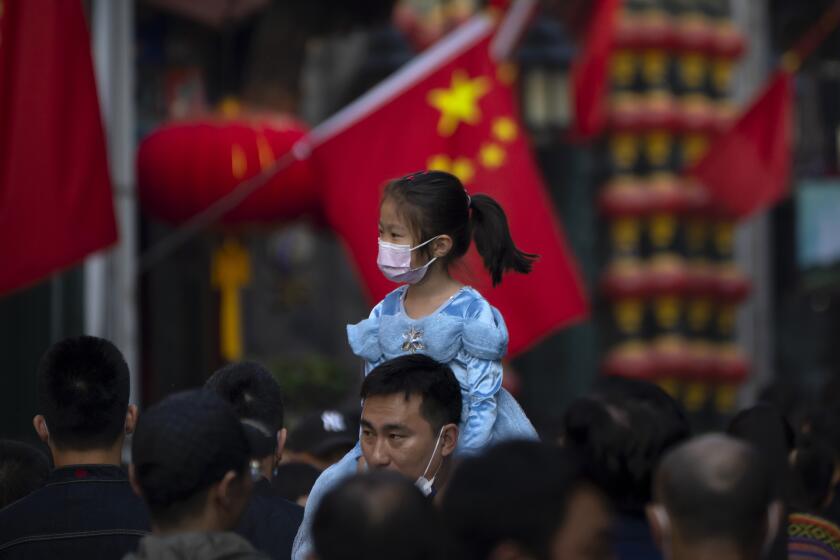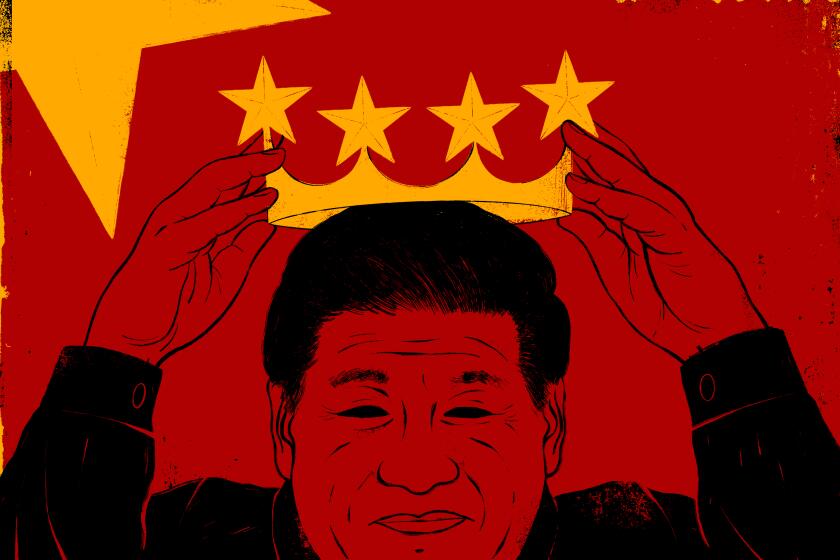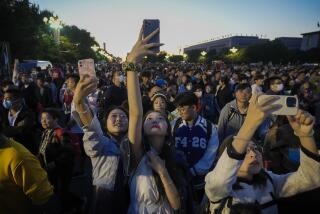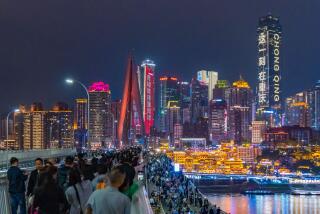Threats and advantages seen in China’s shrinking population
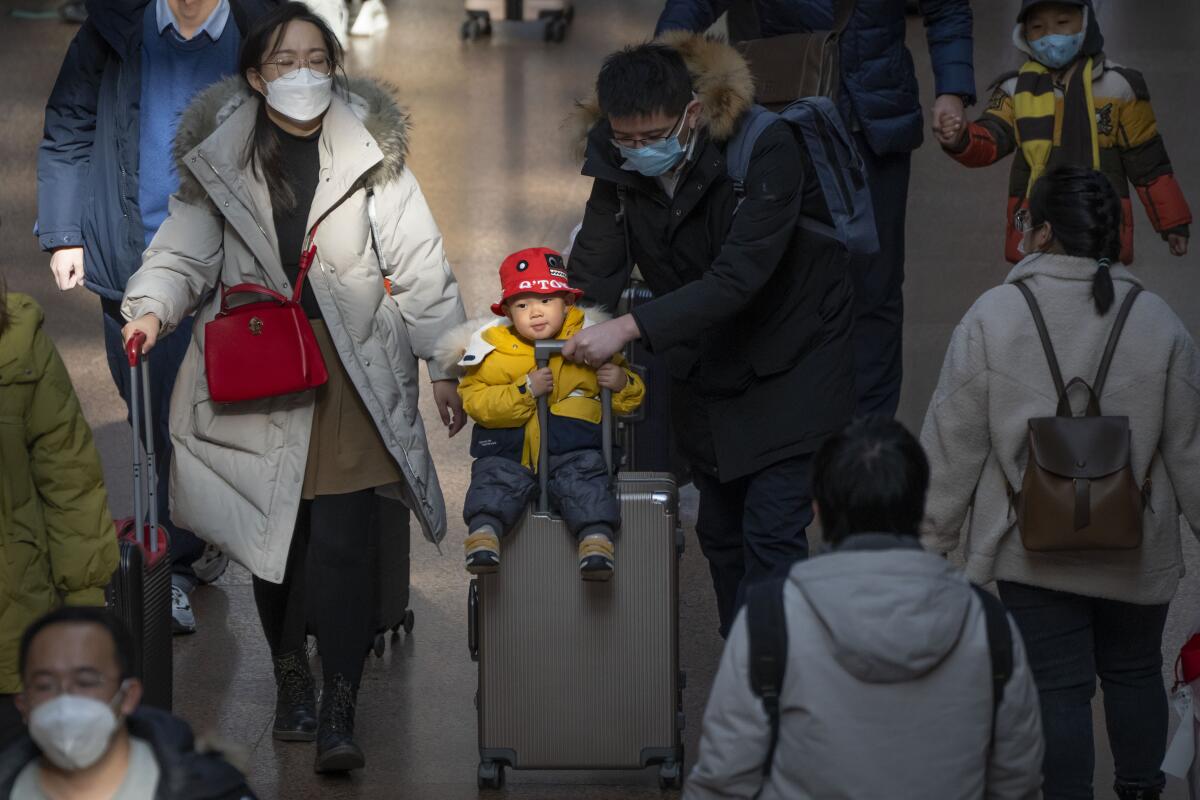
BEIJING — For seven decades, China’s Communist Party has ruled the world’s most populous country. As the nation’s population crests and begins to shrink, experts say, it will face challenges as varied as supporting the elderly and filling the ranks of its military.
Population growth has been slowing for years, but the announcement Tuesday that the country’s population fell by about 850,000 in 2022 came sooner than anticipated.
“Those developments ... may well feed domestic challenges at home and strategic challenges abroad. The party, in short, may be in for a rough go,” said Michael Mazza, an analyst of Chinese military modernization at the American Enterprise Institute in Washington.
Others are less pessimistic.
“China’s increasingly becoming a higher-tech nation, so concentrating on improving the educational system, particularly in impoverished rural areas, and even in cities, is vital. So as well is increasing productivity. Wealthier people will buy more, which also increases GDP,” said June Teufel Dreyer, a Chinese politics specialist at the University of Miami.
With the trend expected to continue, the United Nations estimates China’s population will fall from
1.41 billion to about 1.31 billion by 2050 and keep shrinking.
China had 850,000 fewer people at the end of 2022 than the previous year, the first population decline the country has experienced in decades.
In the late 1970s, worried that China’s population was getting too big, the government adopted its “one-child policy.” Beijing says the policy prevented 400 million additional births, but demographers disagree about how much of the drop in birthrates is explained by the policy.
The one-child policy came on top of existing societal changes, notably the many people relocating to cities during the economic boom, demographers say.
“Of course, the one-child policy had an effect,” said Sabine Henning, who heads the demographic change section at the U.N. Economic and Social Commission for Asia and the Pacific in Bangkok. “But lifestyles have changed. Living expenses have increased, so people are less inclined to have children. All of this has resulted ... in a further decline in fertility since the one-child policy stopped.”
Experience in Europe and Japan shows how difficult it is to change mind-sets and reverse the decline with government incentives and campaigns.
Faced with a crashing birthrate, the policy was abandoned seven years ago, but efforts to encourage bigger families have been largely unsuccessful, like similar efforts in other countries. Europe and Japan have also struggled to change mind-sets and reverse the decline with government incentives and campaigns.
“It amazes me how everyone seems to agree that the planet already has too many people whose demands for even the basics of existence like food, water and shelter are placing intolerable demands on the ecosystem — yet as soon as the population of a country begins to decline, its government reacts with near-panic,” Dreyer said.
China’s paramount leader, Xi Jinping, sees himself as a savior, anointed to steer the Communist Party and China away from corruption and foreign influence, into a ‘new era’ of prosperity, power and political devotion. Whether his vision matches reality is another question.
Beijing’s most immediate demographic challenge is an aging population: Tuesday’s figures showed almost 20% of the population is 60 or older, and Chinese estimates say the number will rise to 30%, or more than 400 million people, by 2035.
Similar changes took decades in Europe.
“They had more time to adjust, whereas it’s happening much faster in Asia,” said Srinivas Tata, director of the social development division at the U.N. commission in Bangkok.
To support this population of retirees, China may increase the retirement age, currently 50 to 55 for women and 60 for men.
The demographic news comes as China’s economy is still recovering from the three-year struggle against COVID-19, which not only battered the economy but sparked rare anti-government and anti-party protests.
Even with a shrinking population, China maintains considerable economic advantages over emerging manufacturing rivals such as Vietnam and India, which is set to overtake China as the world’s most populous country this year. China has superior infrastructure and long-standing private sector relationships that it can rely on for years to come, said Mazza.
China’s political system also plays a role, said Mary Gallagher, a scholar of Chinese politics at the University of Michigan.
“Becoming the workshop of the world ... requires a political system that can take advantage of that cheap young labor without much regard for the laborers’ political and civil rights,” Gallagher said.
U.S. economic sanctions and the push to block Beijing’s access to cutting-edge microprocessors and chip-making technology are further complicating efforts at recovery.
The party also faces a challenge finding qualified recruits for its military, the 2-million-member People’s Liberation Army, experts say.
“It is doubtful that the PLA is getting the best and the brightest, given that families who have the means will discourage military service,” said Dan Blumenthal, director of Asian Studies at the American Enterprise Institute and an expert on East Asian security issues and U.S.-China relations.
Blumenthal warns, however: “That said, if [Chinese leader Xi Jinping] decides he wants a war over Taiwan, he will not be deterred by caring about one-child families.”
Some American observers argue that these challenges could prompt Beijing to make aggressive moves sooner. With the U.S. refocused on the Indo-Pacific, China’s economy slowing and the population shrinking, some in Washington see Beijing as facing a narrowing window for military action against the self-governing island that it claims as its territory.
Still, the effects may not be known for some time.
“Since demographic changes happen slowly, at least at the start of the turn, their effect on China’s standing and influence globally will take time to happen,” said Steve Tsang, director of the China Institute at the London University School of Oriental and African Studies and a longtime observer of Chinese political and social trends.
Xi is committed to his program of achieving “the great rejuvenation of the Chinese nation” by 2049, Tsang said — even if his country may be 100 million people smaller by then.
More to Read
Sign up for Essential California
The most important California stories and recommendations in your inbox every morning.
You may occasionally receive promotional content from the Los Angeles Times.
